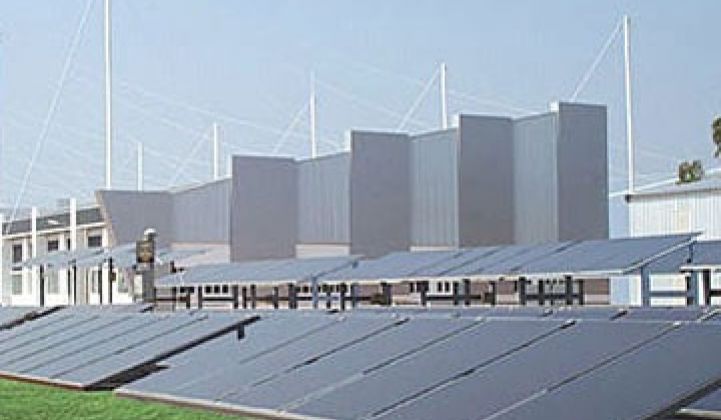Sunfilm has agreed to merge with Sontor, a Q-Cells subsidiary. The move could create a powerhouse manufacturer of amorphous silicon solar panels.
The announcement of the merger on Wednesday is a noteworthy development in a solar technology sector that struggles to prove it can compete with technologies that are more efficient at turning sunlight into energy and produce panels cheaply.
Both Sunfilm and Sontor have been developing the second-generation amorphous silicon technology that produces solar cells with a layer of amorphous silicon and a layer of crystalline silicon to boost power generation. Sunfilm, founded in 2006, the same year Q-Cells started Sontor, announced last week that it had begun mass-producing this type of solar panels, which could convert up to 8 percent of sunlight that hits the cells in it into electricity.
The two companies are bypassing the development curve charted out by some of the other amorphous silicon panel makers in Europe, the United States and Asia.
Those companies, such as Signet Solar in the United States, Sun Well Solar in Taiwan, Moser Baer in India and T-Solar in Spain, have opted to start with the firs-generation technology that makes use of just one layer of amorphous silicon. This type of panels has roughly 6 percent efficiency. These companies began production over the past year.
Most of the solar panels sold on the market today use crystalline silicon as the key ingredient, and the best of them can convert about 19 percent of the sunlight into electricity. Because silicon is expensive, a slew of companies have been developing alternative technologies that make little or no use of silicon.
Advocates of amorphous silicon technology say they could make panels cheaply, and those panels can produce electricity under low-light conditions. The same claims also are being made by Tempe, Ariz.-based First Solar, which makes cadmium-telluride panels and has boasted to be able to make them more cheaply than most if not all companies (see First Solar Cuts Production Cost to $0.98 Per Watt). Making crystalline silicon panels costs around $2.50 per watt.
Through the merger, Sunfilm and Sontor, both in Germany, would combine their manufacturing operations, which would enable them to lower production costs. Together, the companies have the capacity to produce 85 megawatts of panels per year. Sunfilm was still building another 60 megawatts before the merger announcement. The new company would be called Sunfilm and employ about 400 people.
Earlier this year, Sontor reported that it was improving its production rate to make full use of its factory. The company rolled out 3.6 megawatts worth of solar panels in 2008 (see Q-Cell's Sontor Scales Up Micromorph Thin-Film Solar Production).
Q-Cells would own 50 percent of the new Sunfilm while Good Energies would hold a 35 percent stake. Norsun would own the remaining 15 percent. The merger is still subject to government approval, and the companies said they expect to complete the merger by the end of next month.
Manufacturing is all about scale, and the new Sunfilm will face amorphous-silicon competitors who also have ambitious expansion plans. Sharp, for one, started producing tandem-junction cells and assembling them into panels last fall. It built a new factory in Katsuragi, Japan, to boost its production capacity from 15 megawatts in 2007 to 160 megawatts of solar cells per year. The company didn't provide panel production figures, which are lower than cell production numbers.
Sharp is building another factory in Sakai, Japan, that would be able to produce 480 megawatts of a third-generation amorphous silicon solar cells, which would have two layers of amorphous silicon and one layer of crystalline silicon. Sharp said in the past that panels made with this triple-junction solar cells could reach up to 10 percent in efficiency (seeSharp Guns for U.S. Thin-Film Market).



